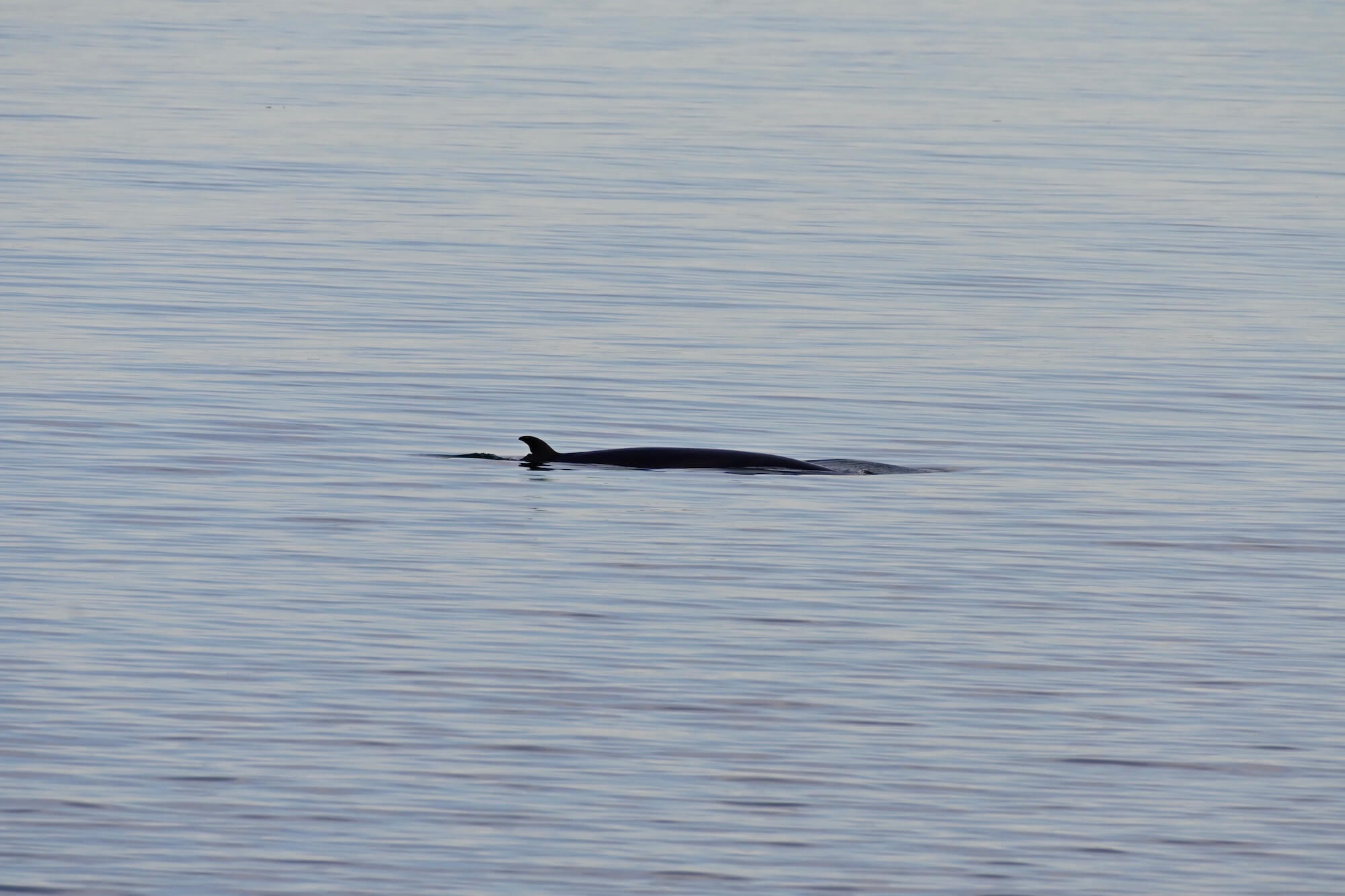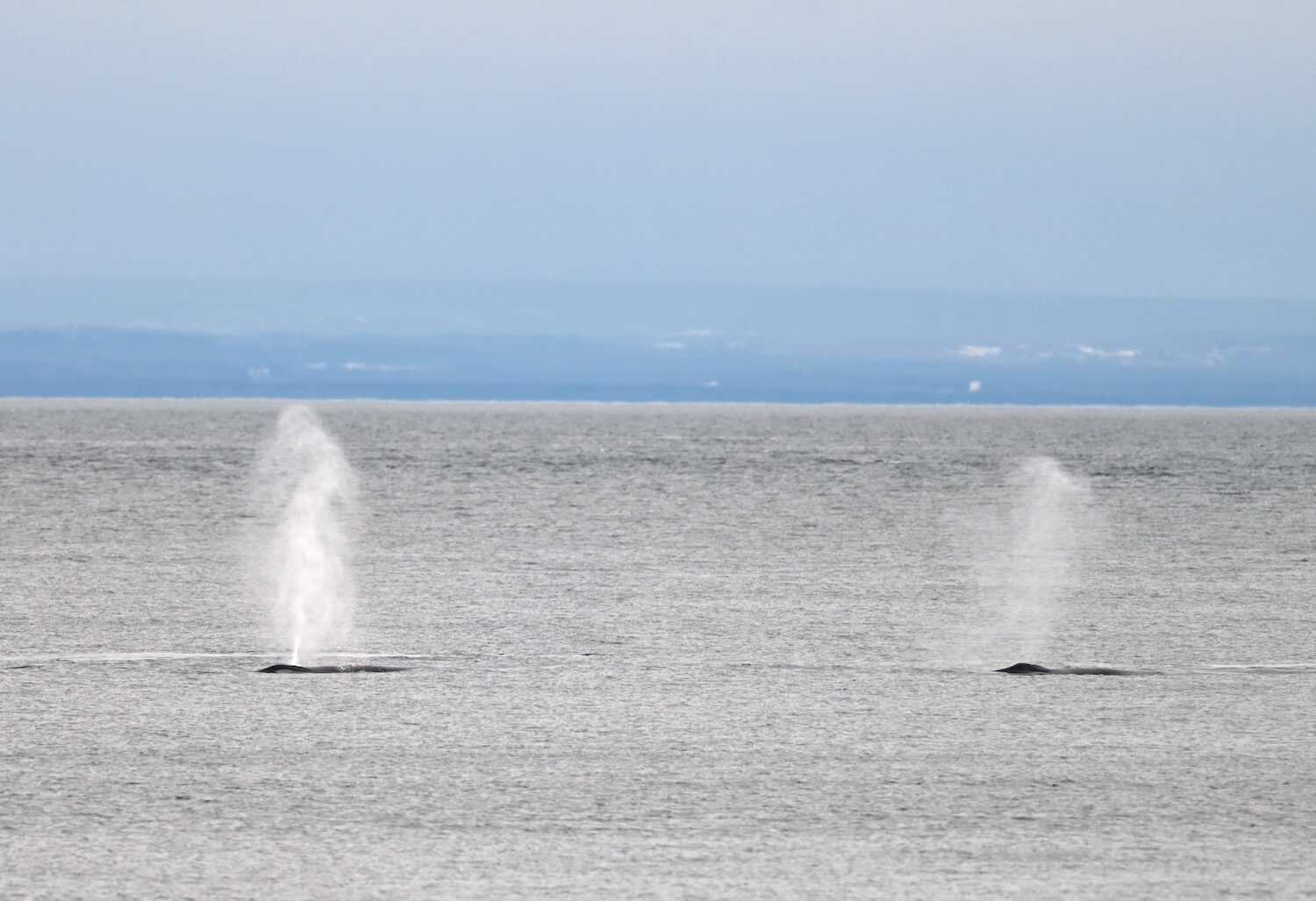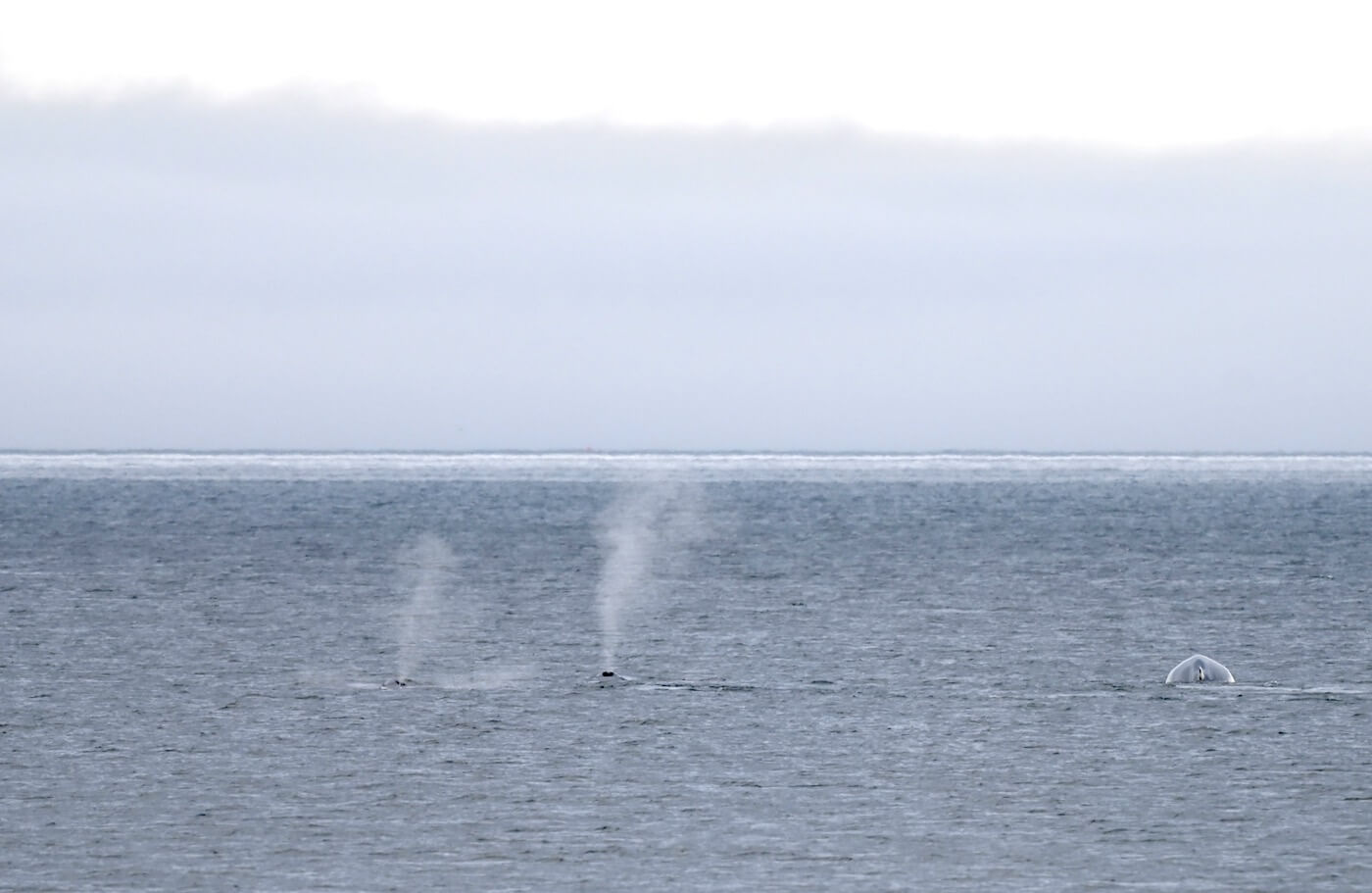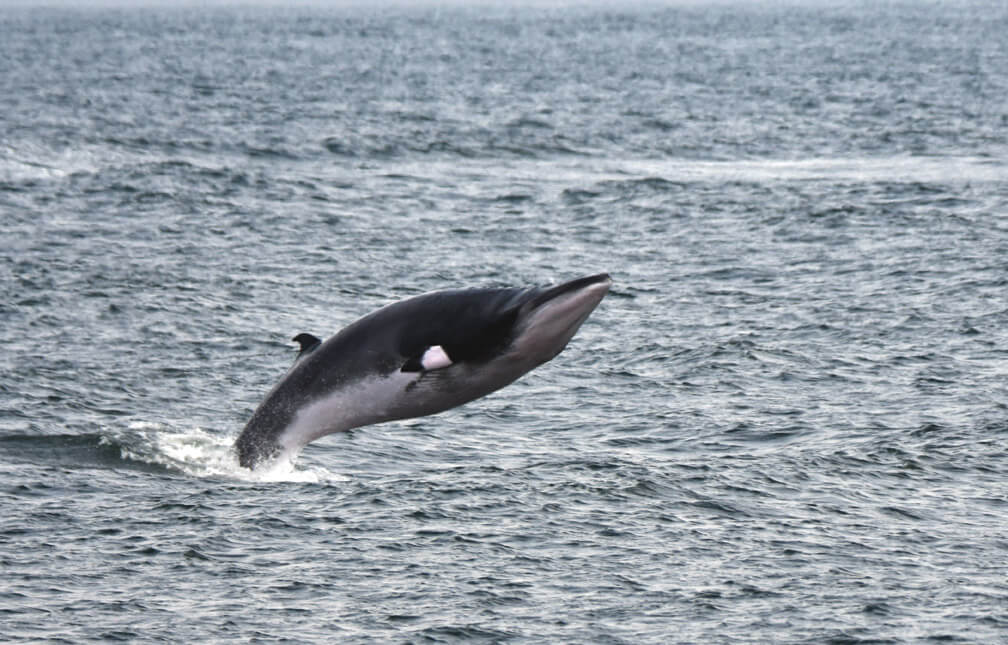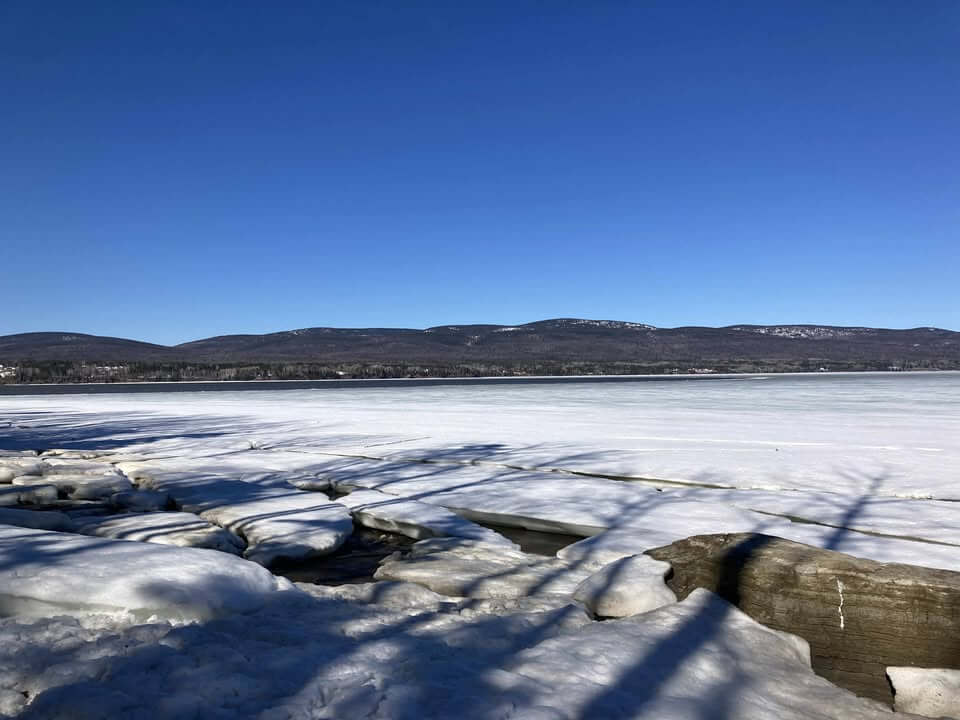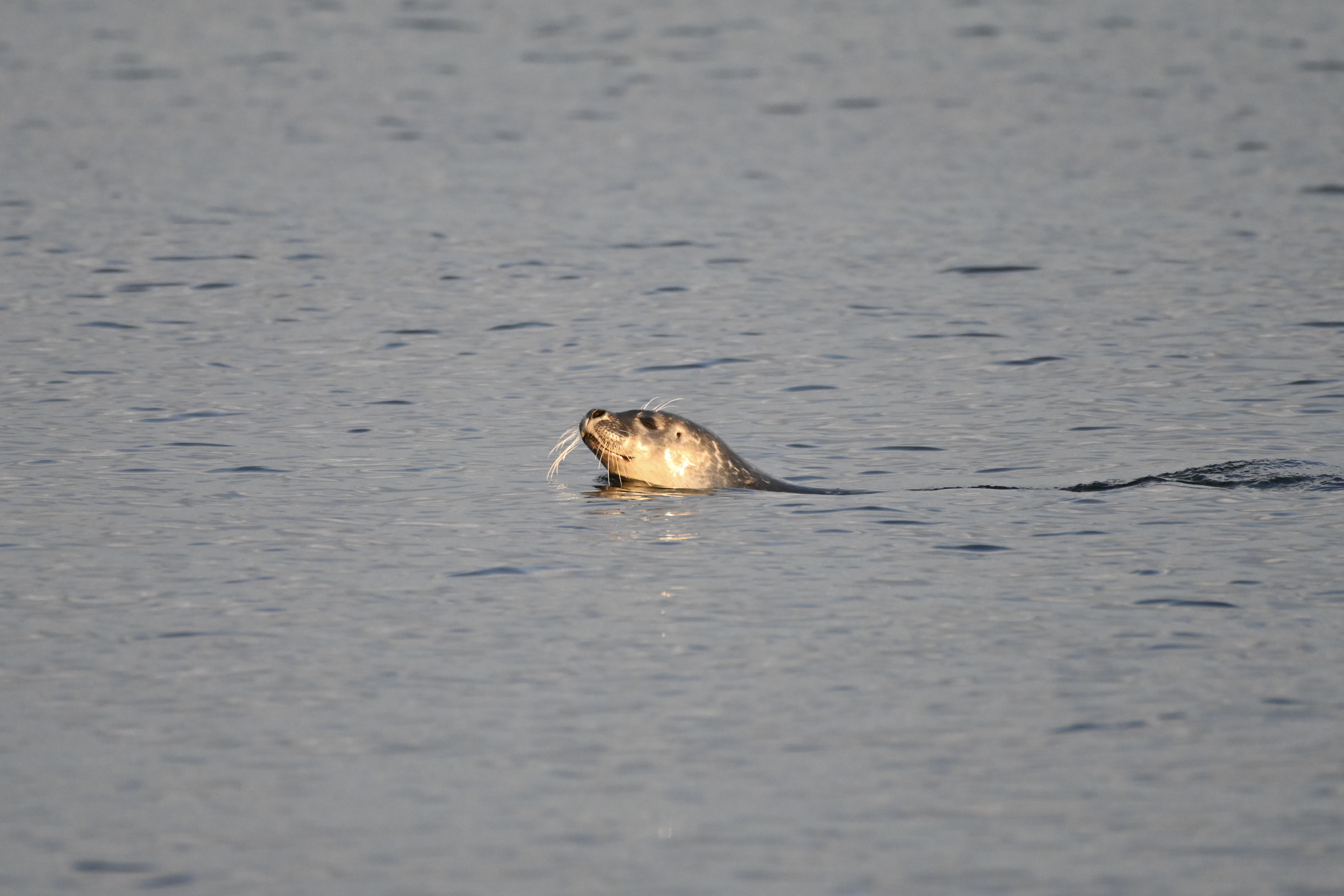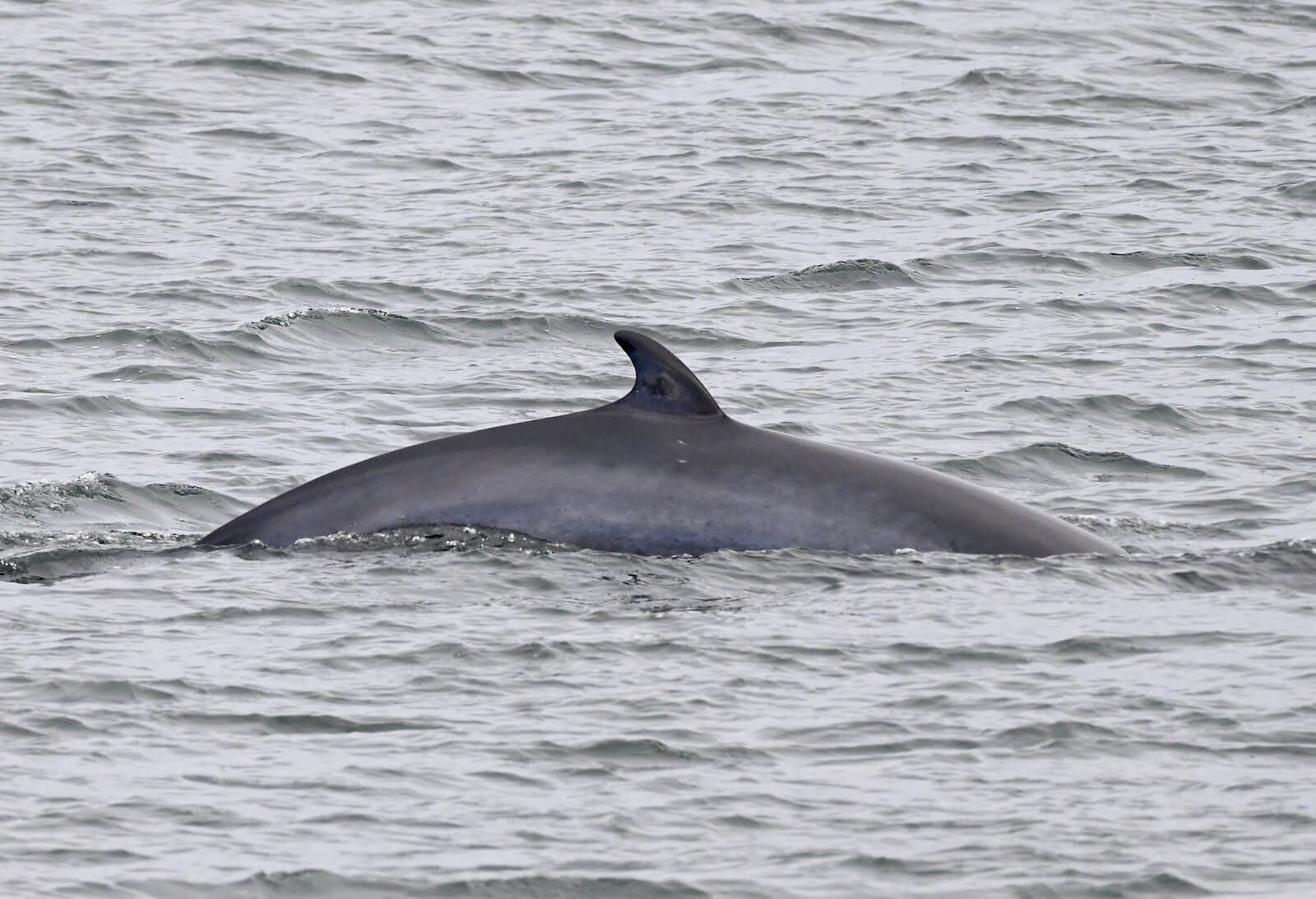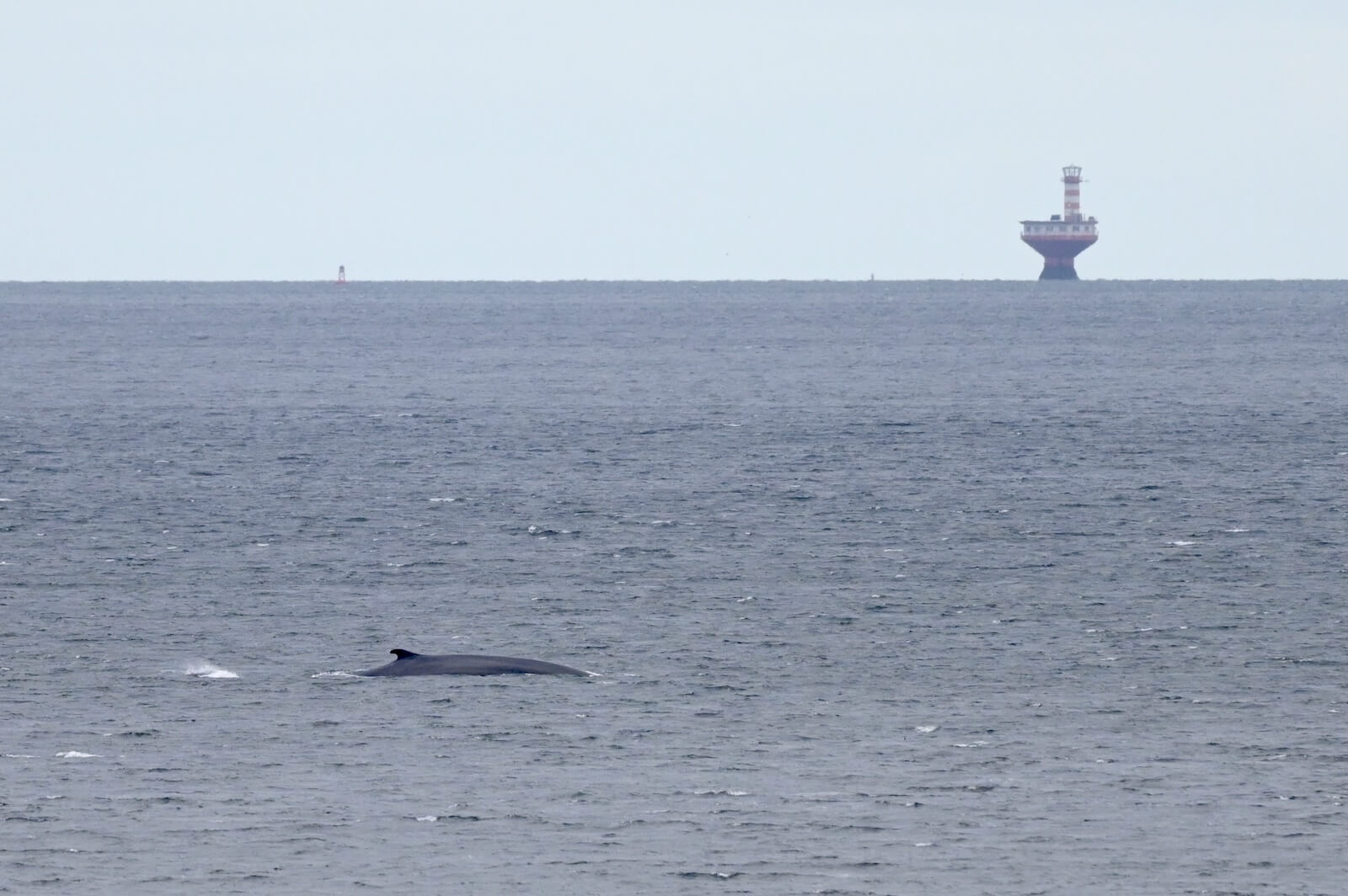Ah, springtime! Newly budding trees, outings along the shore without being so bundled up you can’t even see, poutine trucks, not to mention minke whales in the St. Lawrence, belugas venturing farther up the estuary, and fin whales in numbers.
The always-punctual minke whale!
The smallest of the rorquals may be a little baleen whale, but that doesn’t keep them from making marathon migrations every year. These cetaceans spend the winter in the Caribbean before returning along the east coast of the US. Their return to the St. Lawrence, which often begins as early as late March, generally marks the arrival of spring and the start of the whale-watching season for enthusiasts and naturalists.
Several minke whales have been seen over the past week. This species, often overshadowed by its larger cousins, is in fact every bit as remarkable and fascinating. A regular visitor to the area vividly describes her minke whale sighting: “It was swimming back and forth in front of the rocks near the pilots’ wharf in Les Escoumins, under the pretty hues of the setting sun. It was awesome!” The weather was so calm we could even hear it breathe.” Two minke whales were also reported near Franquelin. As for fin whales, at least three individuals were seen near Les Escoumins, while five were reported near Franquelin.
Recognizing minke whales
Recognizing a minke whale is straightforward for experienced observers, but can be more challenging for beginners if they have nothing to compare them to. The minke whale has a slender silhouette and a sickle-shaped dorsal fin located about two-thirds down the back. Often observed alone, it performs short dives. The species is also known for its spectacular surface feeding manoeuvres and its presence near the coast. This explains why many observers appreciate minke whales!
Its spout is rather inconspicuous, unlike that of larger rorquals. We should also not forget its size! It measures 7 to 10 metres long, as compared to 13 to 17 metres for humpbacks and 18 to 24 metres for fin whales. Another interesting field mark is that the minke whale shows a unique white band around its pectoral fins (sometimes referred to as “mittens”).
Belugas in Saint-Irénée, contracting ice in the Gaspé
A local resident is delighted by the presence of belugas in recent weeks in her part of L’Anse-au-Sac near Saint-Irénée. The number of individuals passing through has varied from three to more than seven. In any case, these spring sightings are more than welcome.
In the Gaspé, one observer hasn’t spotted a single whale, even though there’s been plenty of action bird-wise: “Northern gannets are back, as are harlequins and razorbills. Gaspé Bay is now completely open, and the ice is breaking up in Anse aux Cousins.”
Thanks to all our collaborators!
Special thanks go out to all our observers who share their love for marine mammals with us! Your encounters with cetaceans and pinnipeds are always a pleasure to read and discover.
On the water or from shore, it is your eyes that give life to this column.
Odélie Brouillette
Marie-Andrée Charlebois
Michel Comeau
Laetitia Desbordes
Natasha Fenwick
Diane Ostiguy
Renaud Pintiaux
Pascal Pitre
René Roy
Guillaume Savard
Andréanne Sylvain
Marielle Vanasse
And to all the others!
Additionally, we would like to acknowledge the following teams that also share their sightings:
Sept-Îles Research and Education Centre (CERSI)
Group for Research and Education on Marine Mammals (GREMM)
Marine Mammal Observation Network (MMON)
Quebec Marine Mammal Emergency Response Network (QMMERN)
Mingan Island Cetacean Study (MICS)
Would you also like to share your observations?
Have you seen any marine mammals in the St. Lawrence? Whether it’s a spout offshore or just a couple of seals, drop us a line and send your photos to [email protected]!


